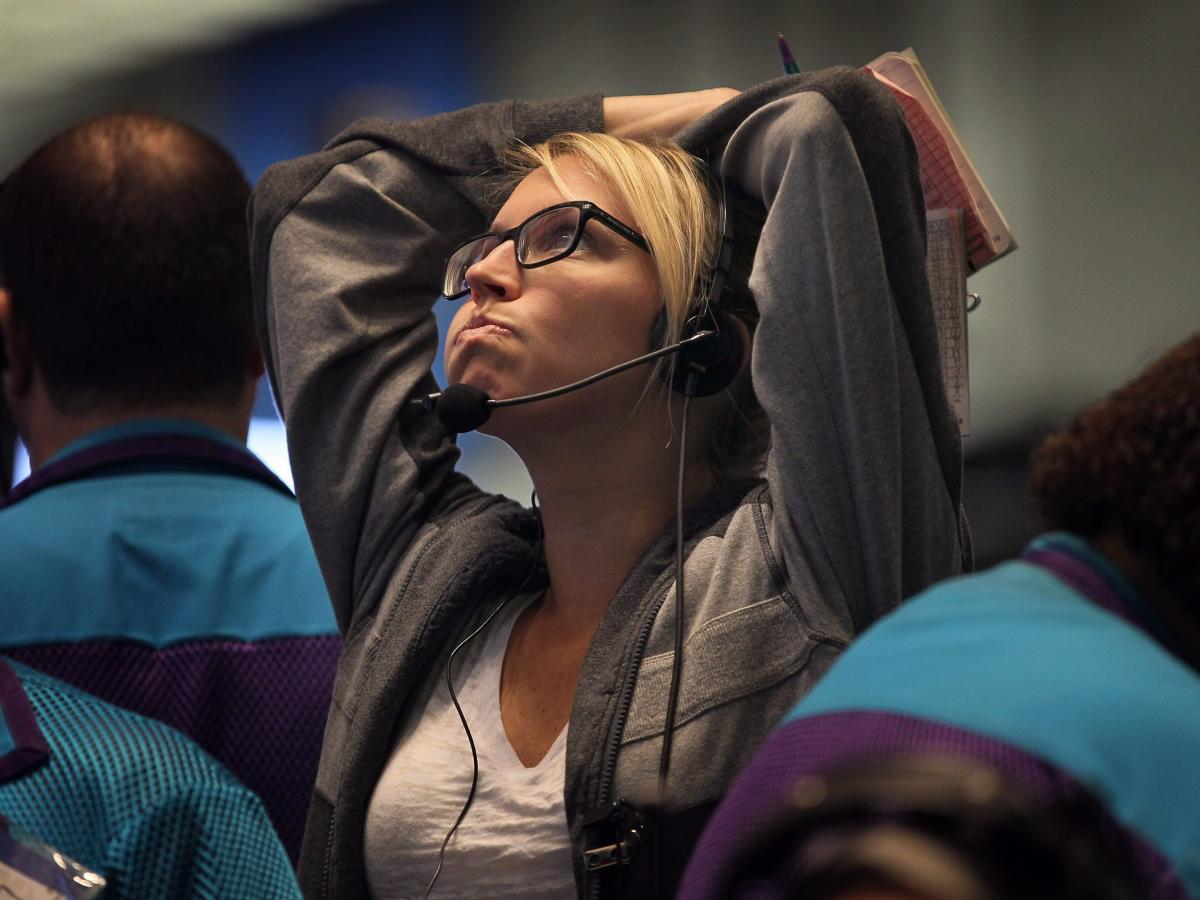-
Stocks, cryptocurrencies and other assets have been hit by market turmoil in recent days.
-
Recession fears, the Japanese yen, valuations and the Fed’s next move created chaos.
-
Some experts expect more pain for investors, while others say the sell-off was an incident.
Stock markets have been rocked in recent days by renewed recession fears, dismal corporate earnings and foreign monetary policy. Investors appear to have regained their composure, but experts warn that the chaos may not be over yet.
What happened?
The S&P 500 has fallen 8% from its July 16 peak to close below 5,200 on Wednesday. The tech-heavy Nasdaq Composite has fallen 13% over the same period, while bitcoin and ether have fallen 16% and 31% respectively since late July to hit their February lows.
Nvidia, the microchip maker that has become the star of the artificial intelligence craze, has fallen 30% from an intraday peak of $141 on June 20 to $99 by Wednesday’s close. The sell-off has cut its market value from more than $3.2 trillion to less than $2.5 trillion.
The market decline is the result of several headwinds that are scaring investors:
-
Friday’s jobs report showed the U.S. economy added fewer jobs than expected and the unemployment rate rose to 4.3%, the highest level since October 2021. The news fueled concerns on Wall Street that growth is slowing and that corporate profits could suffer.
-
The Bank of Japan said on July 31 that it would raise its benchmark interest rate to combat inflation and strengthen its currency, and said it expected to tighten monetary policy further. The announcement sent Japanese stocks tumbling and fueled a global market selloff as investors rushed to unwind “carry trades” aimed at borrowing cheaply in Japan and investing the funds in higher-yielding assets abroad. The central bank reversed course on Wednesday, saying it would not raise interest rates further for the time being.
-
A combination of record-low U.S. interest rates since the financial crisis and historic government spending during and after the pandemic pushed the value of stocks, real estate, cryptocurrencies and other risky assets to record highs. But the Federal Reserve has raised interest rates from near zero to more than 5% since the start of 2022, increasing the relative appeal of safe haven assets like savings accounts and Treasuries and making it more expensive for companies to borrow money to fuel growth. The Fed has held off raising interest rates as inflation remains well above its 2% target, which has kept the pressure on the economy.
-
Other factors include investor skepticism about the huge sums of money being poured into AI, with minimal returns to date. There are also concerns about the health of Big Tech after Tesla’s profit nearly halved last quarter and Google-owner Alphabet reported slower advertising growth. And over the weekend, Warren Buffett’s Berkshire Hathaway announced it had cut its massive stake in Apple last quarter.
Will there be more pain to come?
U.S. stocks rose in early trading on Thursday, suggesting nerves on Wall Street have calmed. But several experts have warned that more trouble could be ahead.
“Stock market finally appears to be starting to correct,” reads a subheading in the latest research note from Paul Dietrich, chief investment strategist at B. Riley Wealth Portfolio Advisers. He attributed the “massive stock market sell-off” to “fears of a looming U.S. recession” fueled by worsening economic data, and warned that the S&P 500 could ultimately fall 40% from its recent highs.
Goldman Sachs’ Peter Oppenheimer told CNBC this week that there is still fear in the markets, which could fuel further volatility.
“I feel like this correction, while stabilizing, is not over yet,” the bank’s chief global equity strategist said. “I think we’re still going to see some bumpy environments in the near term as investors really start to recalibrate and regain confidence in the direction of rates and the economy.”
Many investors are hoping that the market slump and growing signs of economic weakness will prompt the Fed to cut rates, which would boost asset prices. But veteran economist David Rosenberg warned investors not to breathe a sigh of relief if that happens.
The president of Rosenberg Research noted that after the Fed began rate-cutting cycles in January 2001 and September 2007, recessions hit a few months later in both cases. The S&P 500 also fell by about 40% and 50% over the next few years both times.
“Now you know where the term ‘sucker’s rally’ comes from,” Rosenberg said.
He also pointed out that economists at JPMorgan recently raised their estimate of the probability of a recession this year to 35% from 25%, and that Goldman economists now estimate the probability of a recession in the coming year at 25%, up from 15%.
“There are few asset classes that are priced anywhere near that opportunity,” Rosenberg warned.
According to these experts’ comments, investors should prepare for further market turmoil and potentially significant declines as the recession deepens, even if the Fed steps in to save the day.
Positive sign
Other gurus aren’t so worried. In a recent note, Fundstrat’s Tom Lee pointed to a sharp drop in Wall Street’s “fear gauge” as reassuring. “VIX dropping from 66 to 27 is a positive sign and a further sign that this is a ‘growth scare’ where the worst is probably behind us.”
No one knows for sure where markets are headed, as Wall Street splits over whether the U.S. economy is solid or crumbling, whether the AI boom is a bubble, and whether the Fed will cut rates in the coming weeks. And whether it’s too little, too late.
But the trading of the past few days shows that even, and perhaps especially, the highest-flying assets can fall sharply when nervous investors get bad news. If the bears are right, more of the same could happen.
Read the original article on Business Insider



